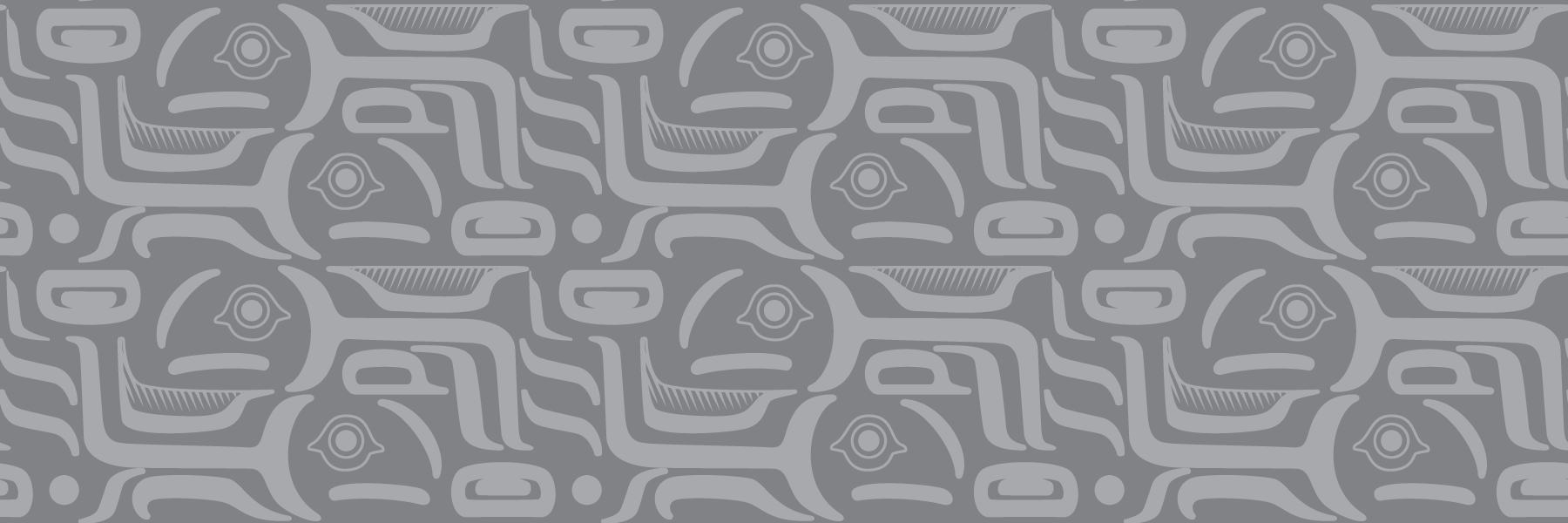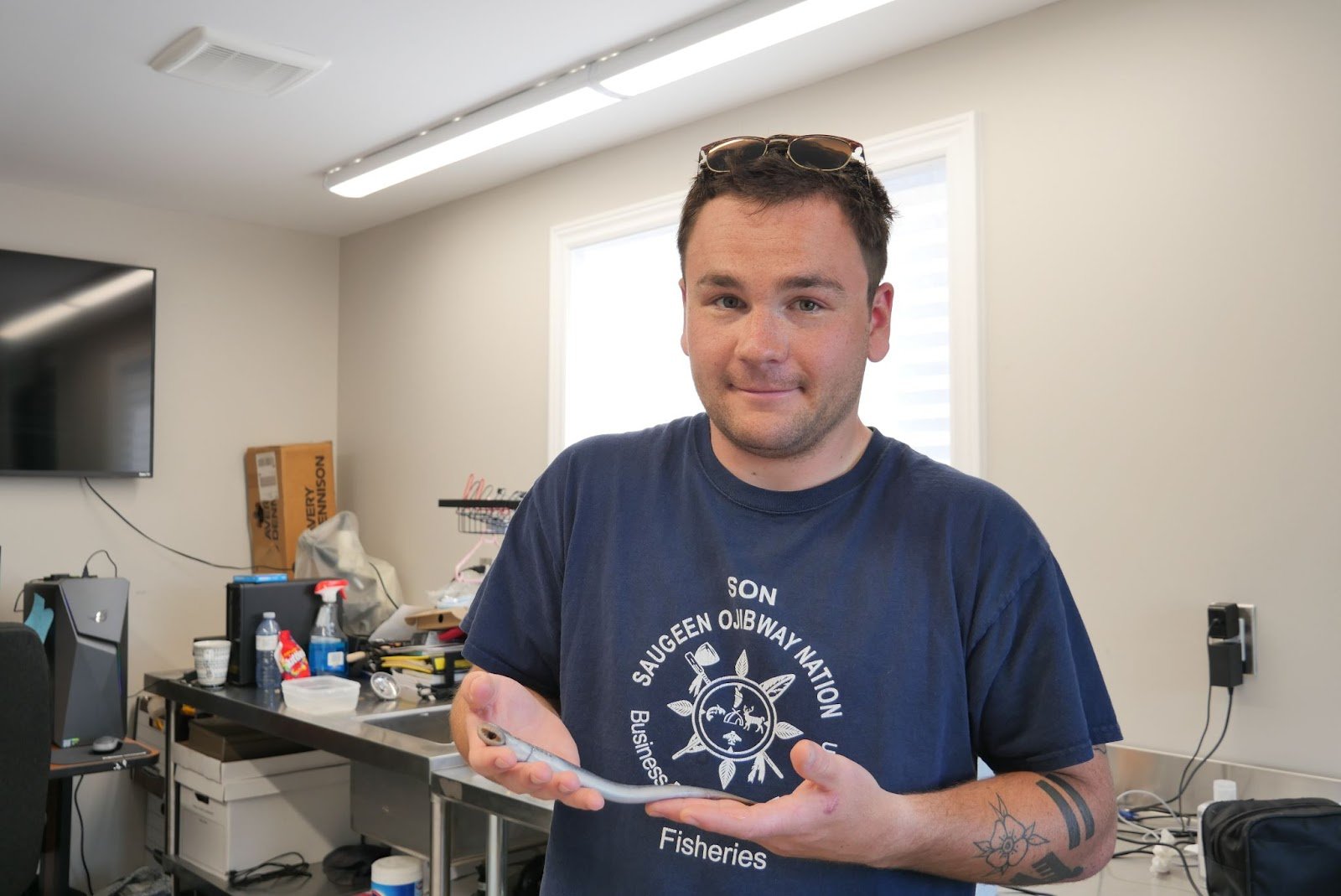
Sea Lamprey Research and Management - Indigenous Input and Inclusion
September 2021 - ongoing
-
Fish
Sea Lamprey (Petromyzon marinus)
-

People
-

Place
Nayaano-nibiimaang Gichigami
(The Laurentian Great Lakes)

Acknowledging
Nayaano-nibiimaang Gichigami
Before we dive into some project specifics, the team would like to recognize the land and territories upon which the 3I Project takes place. Nayaano-nibiimaang Gichigami, the Anishinaabemowin word for the five freshwater lakes and what is known to some as the Laurentian Great Lakes, is a region that is home to over 100 distinct Tribes (US) and First Nations (Canada). Lakes Superior, Huron, Michigan, Erie, Ontario, and Nipigon and St. Clair, have sustained these Nations since time immemorial. This region is also home to two countries, eight states, and one province.
Our team recognizes the centrality of these water systems to the original inhabitants (both human and non-human) and the many Indigenous territories which are found in and around these waters. Two prime examples here in Canada include the advocacy work Josephine Mandamin undertook by walking the Great Lakes in 2003-2017, and the 42 assertions of the 2008 Chiefs of Ontario Water Declaration.
The 3I Project: Indigenous Input & Inclusion
Since colonization, Indigenous communities in North America have been largely excluded from mainstream decision-making and planning processes that dictate activities and consequences on traditional territories. The relationships between fisheries management agencies, governments, and Indigenous nations are often fraught due to historical and continued traumas, power imbalances, and various forms of environmental and racial injustices.
The Great Lakes Fishery Commission (GLFC) is not immune from these tensions and histories of exclusion. Formed in 1955, the GLFC was established to directly address the implications of sea lamprey presence in the Great Lakes. Sea lamprey (Petromyzon marinus) first entered the Great Lakes in the mid-1900s from the Atlantic Ocean at a time when the Great Lakes were already threatened by intensive overfishing and habitat degradation. The introduction of sea lamprey hastened the decline of important commercial fish species like lake trout and lake whitefish. The dire state of the Great Lakes fisheries led to binational and multi-jurisdictional collaboration through treaty and the formation of the GLFC. The GLFC was tasked with controlling the sea lamprey and has effectively reduced populations by 90% thanks to two main control methods: [1] barriers to block spawning migrations up tributaries and [2] the application of chemicals known as lampricides to target larval sea lamprey. Despite the effectiveness of these methods, no control tactic is perfect and non-target effects occur including barrier habitat fragmentation and lampricide induced mortality. Critically, many control measures occur within Indigenous territories, often without express permission or adequate consultation with First Nations or Tribes. Although there are several examples of positive collaboration among management agencies and Indigenous Nations, much work remains to achieve truly just decision-making and equitable consideration of Indigenous values in this system.
Cooperation across groups and borders, as well as sustained and reciprocal research relationships, are key to successfully managing fisheries and aquatic ecosystems through space and time. This project proposes to strengthen avenues of engagement and create opportunities for Indigenous Input & Inclusion (“3I Project”) in GLFC-supported activities by focusing specifically on a long-standing and divisive issue – the invasive sea lamprey (Petromyzon marinus) and its control. At present, there is limited research on the socio-ecological relationships between Indigenous Peoples and lampreys (both native and invasive) in the Great Lakes, and no research on Indigenous perspectives of sea lamprey control. The exploratory 3I Project will focus on enhancing collective understanding of Indigenous perspectives of and experiences with sea lamprey and their control in the Great Lakes Basin. This research will also identify research and management priorities as well as best practices to directly guide future work.
Meet the 3I Team
The 3I team is made up of both Research Team and Indigenous Advisory Council members. In Anishinaabe culture, women share a sacred connection to water and hold primary responsibilities to water (Chiblow 2019). So to guide this work, four extraordinary women from the Great Lakes region were invited to form the 3I Indigenous advisory council. This group is a reflection of those responsibilities and the resurgence of women to engage in that space.
Fish Facts: Lampreys!
The sea lamprey (Petromyzon marinus; largest and furthest right) alongside the four native species of lamprey. From right to left: American brook lamprey (Lethenteron appendix), chestnut lamprey (Ichthyomyzon castaneus), silver lamprey (Ichthyomyzon unicuspis), and northern brook lamprey (Ichthyomyzon fossor).
(Credit: Andrea Miehls, USGS)
The Laurentian Great Lakes are currently home to five species of lamprey: the invasive sea lamprey (Petromyzon marinus) and the native American brook lamprey (Lethenteron appendix), chestnut lamprey (Ichthyomyzon castaneus), silver lamprey (Ichthyomyzon unicuspis), and northern brook lamprey (Ichthyomyzon fossor). As you can see from the image above, sea lamprey are much larger than their native counterparts, one of the reasons why they were so destructive in the Great Lakes.
Native lamprey species provide a number of ecosystem services. As larvae in tributaries, native lamprey can increase aeration and dissolved oxygen in substrates, contribute to nutrient cycling by consuming organic detritus and micro-organisms, and by acting as prey for other species. Adult native lamprey are also prey for other species as well as a source of lake-derived nutrient transfer into tributaries as the parasitic species of lamprey spawn and die in tributaries. As a consequence of sea lamprey control, all four of the native lamprey species have experienced severe population declines and reductions in distribution. Neave et al., (2021) provides some critical information on these declines.
Interested in Getting Involved?
3I Workshop
When: March 16, 2023
Who: First Nations & Tribes from across the Great Lakes
Workshop Report
Indigenous fisheries in Nayaano-nibiimaang Gichigamiin: Sharing perspectives and experiences with sea lamprey on traditional territories
As part of the 3I Project, the research team hosted a virtual gathering that engaged Tribes and First Nations from all corners of the Great Lakes on sea lamprey and their control. We invited representatives and members of First Nations and Tribes from across the Great Lakes to participate. A workshop report will be posted here soon. Below are recordings from the workshop, with discussions from Dr. Susan Chiblow, Bill Mattes, and Dr. Deborah McGregor.
Summer Field Work
Who: Interested Indigenous communities
Connect with Us!
Contact Alexander Duncan at a.duncan [at] oceans.ubc.ca or 226-668-5221
Join the 3I Research Team for Field Work!
The 3I research team will be seeking interested Indigenous communities/Nations to partner with in this study. We acknowledge the role Indigenous Nations should play in research and want to honour that through the diligent following and application of community/Nation-specific protocols in our work. Establishing a partnership with the 3I research team involves co-developing a collaborative research agreement, and likely includes community gatherings to learn about this research and sea lamprey control generally, fieldwork, and follow up commitments.
If your community/Nation is interested, or if you know of one, please let the 3I research team know. We look forward to working with you and learning together!

Interested in Learning More?
Suggested readings to learn more about sea lamprey in the Great Lakes:
Brant, C. (2019). Great Lakes Sea Lamprey: The 70 Year War on a Biological Invader.
Mattes, W.P., and Kitson, J.C. (2021). Sea lamprey control in the Great Lakes: A Tribal/First Nations Representative’s perspective.
Nonkes C., Duncan, A.T., Lauzon, R., Ryan, K., Reid, A.J., Cooke, S.J., and Young, N. (2023). Two-Eyed Seeing: Developing perspective and wisdom on sea lamprey in the Laurentian Great Lakes.
Nonkes C., Lauzon, R., Redford, B., and Duncan, A.T. (2024). Adaptation through knowledge coexistence: insights for environmental and sea lamprey stewardship.
Dennys Dam Research Summary - Sea lamprey and Indigenous partnership
To learn more about all GLFC lamprey control activities, visit http://data.glfc.org/ to view an interactive map with records of all lamprey control activities since the program’s establishment.
Project Funding

Photo Credits & Gratitude: We hold our hands up in thanks to Alex Duncan, Beth Nyboer, and the Chippewas of Nawash Unceded First Nation Fisheries Assessment Program.















